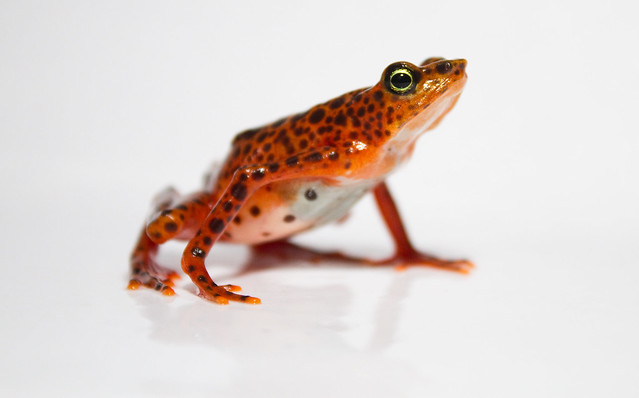ASA, Global Wildlife Conservation (GWC), and the Amphibian Red List Authority (ARLA) of the IUCN SSC are collaborating to update all amphibian Alliance for Zero Extinction (AZE) sites. Thanks to a grant from Synchronicity Earth—a fellow Amphibian Survival Alliance (ASA) partner—we are developing an approach that updates the AZE data in parallel with the IUCN Red List assessment process.
The latest iteration of the AZE list includes 344 sites that are triggered in part or in full by at least one amphibian species. AZE sites hold Critically Endangered or Endangered species restricted to a single site globally and are in urgent need of conservation to prevent imminent extinction. All confirmed AZE sites also qualify as Key Biodiversity Areas, sites that contribute significantly to the global persistence of biodiversity. The recent global AZE update took place before many amphibian species had been reassessed for the second Global Amphibian Assessment, requiring additional work to ensure that the amphibian AZE sites are up to date in order to best guide conservation efforts.
For amphibian species reassessed in 2018 or earlier, we are using the updated IUCN Red List assessments and range maps to assess whether current AZE trigger species still meet the criteria and to identify potential new AZE trigger species. We are contacting local experts to confirm or reject these initial assessments, resolve any outstanding questions, and seek feedback on site delineation. For species reassessed in 2019 and 2020, we are folding the review of AZE sites into the Red List workshop or process for a given country or region.
By preparing extensively ahead of the Red List workshop, including an initial assessment using the draft Red List assessments and preparing maps of current and potential trigger species in relation to AZE and other KBA boundaries, we are able to quickly review the AZE data during the workshops in a way that adds value to, rather than detracts from, the reassessment process.
We recently tried this approach in Honduras in March and will replicate it in the following countries and regions over the next 1-2 years:
Central America, Caribbean, Brazil, Venezuela, Europe, Mainland Southeast Asia, Melanesia, South Asia, Sri Lanka, East Asia, and USA.
The full update of amphibian AZE sites will be completed along with the second Global Amphibian Assessment at the end of 2020.
We are proud to be part of the Alliance for Zero Extinction, which brings together organisations such as American Bird Conservancy, IUCN, GWC, Synchronicity Earth and ASA to pinpoint and drive the protection of the Earth’s most irreplaceable places to safeguard endangered species.
Photo: The Darien Stubfoot Toad (Atelopus certus) is restricted to the Cerro Sapo range in western Parque Nacional Darién and Critically Endangered on the IUCN Red List © Brian Gratwicke, Smithsonian Conservation Biology Institute

